
Order of Carlos III is the highest civilian award in Spain
The Order of Carlos III (Spanish: Real y Distinguida Orden Española de Carlos III) is one of the oldest Spanish awards. The Order of Carlos III was founded in the second half of the 18th century and is still awarded today. The regalia is now intended to honor civilians for their exceptional services to the state. Throughout its long history, the statutes of the Order have been revised several times, but the symbolism of the insignia has remained unchanged, and the position of Grand Master is currently held by the reigning Spanish monarch.
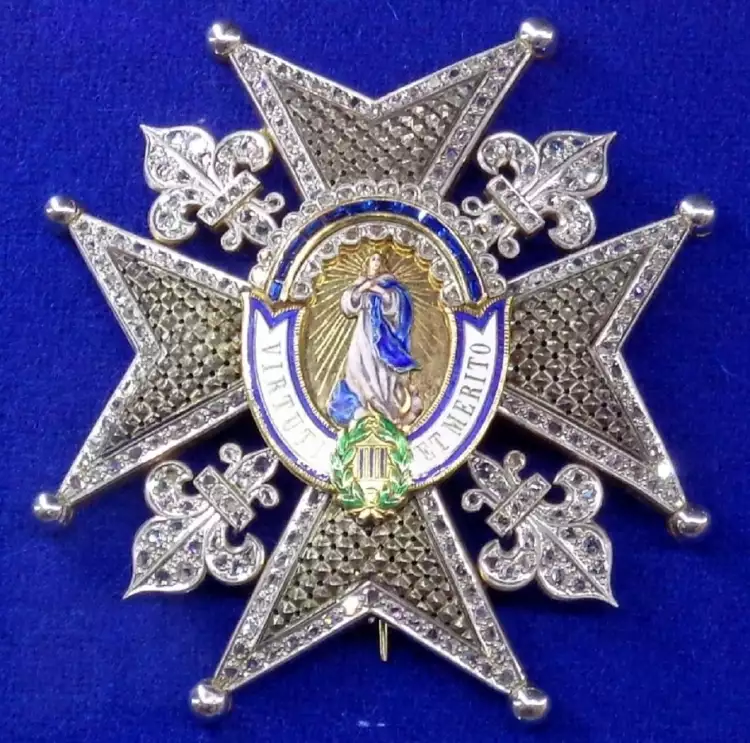 Order of Carlos III. Star of the Grand Cross with diamonds
Order of Carlos III. Star of the Grand Cross with diamonds
Key characteristics of the Order of Carlos III:
- Artist: Unknown.
- Country: Spain.
- Date of establishment: September 19, 1771.
- Number of ranks: 5.
- Size of the Grand Collar star: 75.4 mm x 80.2 mm.
- Size of the Grand Cross: 81.1 mm x 80.8 mm.
- Size of the Commander with Star insignia: 75.5 mm x 79 mm.
- Size of the Commander insignia: 44.6 mm x 71.2 mm (with wreath and ring).
- Size of the Knight insignia: 41 mm x 64.8 mm (with pendant).
- Size of the Grand Cross star: 81.1 mm x 80.9 mm.
- Size of the Commander star: 74.1 mm x 79 mm.
- Materials of the Order's insignia: gold, silver, gilding, enamel, and, by special order from jewelers, diamonds.
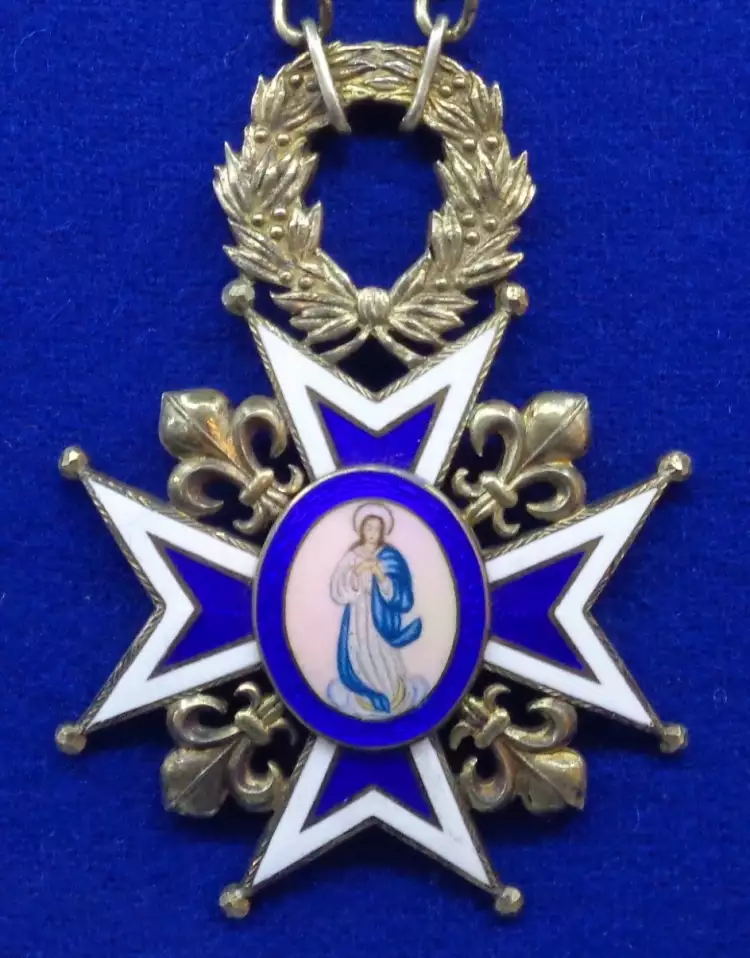 Order of Carlos III. Order insignia on a collar
Order of Carlos III. Order insignia on a collar
History of the Order of Carlos III
The Order of Carlos III is a regalia closely associated with the royal family. In 1759, Carlos III, the Duke of Parma, Piacenza, and Tuscany, ascended the throne as the representative of the Spanish branch of the Bourbons, the son of Felipe V and Elisabetta Farnese. The establishment of the award followed prolonged attempts by the monarch to produce an heir. In his marriage to Maria Amalia von Sachsen, only girls were born for a long time. The first son suffered from epilepsy, and doctors deemed him unfit to rule the state. In 1748, the queen finally gave birth to a healthy boy. The heir grew up, got married, but for five years, their marriage remained childless.
Carlos III established the Order of Carlos III when the long-awaited grandson was born. Formal the regalia was dedicated to the Virgin Mary and the mystery of the Immaculate Conception, but everyone understood that the monarch founded the award in honor of the birth of the heir. He even ordered the publication of the order's statutes on October 24, 1771, although he signed the document five days earlier. The event was timed to the date when the princess had fully recovered from childbirth and could attend Mass with the infant in her arms.
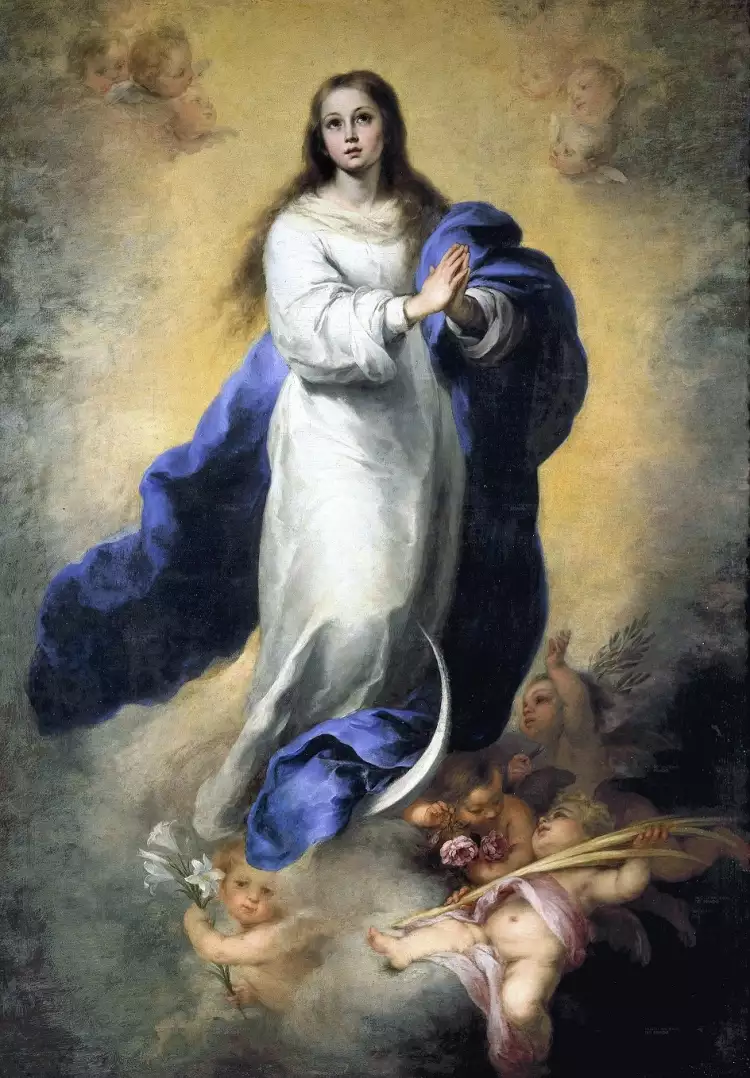 Order of Carlos III. Bartolomé Esteban Murillo. Immaculate Conception, 1680
Order of Carlos III. Bartolomé Esteban Murillo. Immaculate Conception, 1680
The first edition of the statutes provided for only two ranks of the order and limited the number of recipients. Only sixty knights could receive the "Grand Cross," and two hundred could become "Pensioners." The regalia was exclusively intended for nobles who could prove the presence of three generations of noble ancestors. During the initiation ceremony, candidates swore allegiance to the monarch and the Catholic faith. In addition, the knights were obliged to pray incessantly, regularly attend Mass, and receive communion annually.
The kingdom took care of the production of the honorary insignia. Upon admission to the order, a knight contributed fifty gold doubloons to the treasury. All knights received the right of unhindered access to the palace and a pension of four thousand reals per year. However, soon this amount significantly decreased due to a lack of money in the treasury. The order was managed by the Assembly, which included the Grand Chancellor, prelate, and three secular ministers who held the positions of secretary, treasurer, and master of ceremonies.
In 1804, Carlos IV modified the statutes and introduced two more managerial positions: prosecutor and accountant. Napoleon Bonaparte abolished the regalia after the conquest of Spain, but it was restored in 1814. Subsequently, the order was dissolved twice and restored again: during the time of the Republic and then during the Civil War. Queen Isabel II abolished the requirement of mandatory nobility, and in 1863, the number of classes increased to five:
- Collar.
- Knight Grand Cross.
- Commander by Number (with a star).
- Commander.
- Knight's Cross.
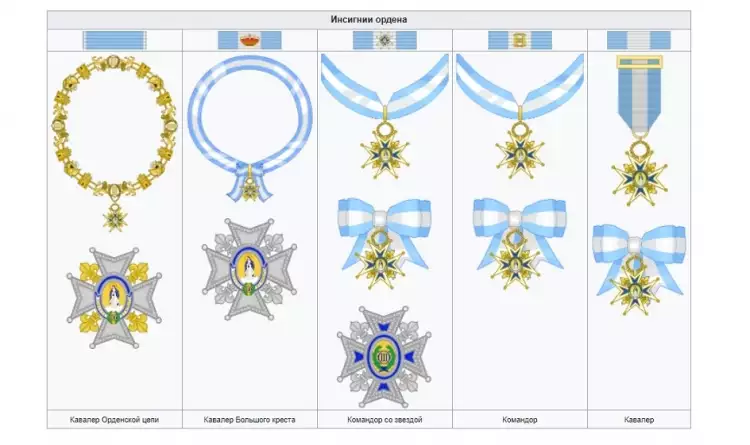 Order of Carlos III. Insignia of the Order
Order of Carlos III. Insignia of the Order
The last changes to the statutes were made in 2002. The new provision established the regalia as the highest state award for civilians. Since 1983, the order has been awarded to women as well. Today, the overwhelming majority of recipients are former and current heads of ministries and departments in Spain.
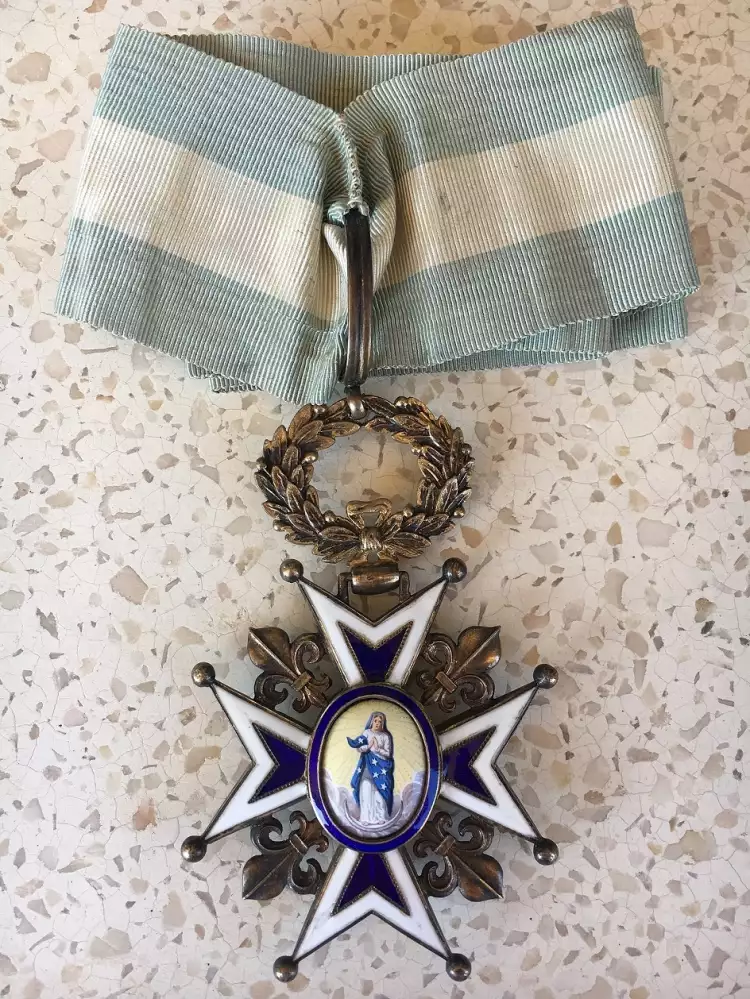 Order of Carlos III. Commander's Cross
Order of Carlos III. Commander's Cross
Insignia, Ceremonial Attire, and Knights of the Order of Charlos III
The main symbol of the Order, from its foundation to the present day, remains the Most Holy Virgin Mary. The Virgin Mary is depicted on a medallion placed at the center of the eight-pointed cross. The highest degree entails wearing a massive gold chain with links in the form of figures: the Roman numeral III, a miniature castle, and lions. The ceremonial attire consists of a short mozzetta cape and a blue mantle embroidered with silver. The insignia includes a blue ribbon of the Order with a white stripe in the center, fastened at the end with a suspension.
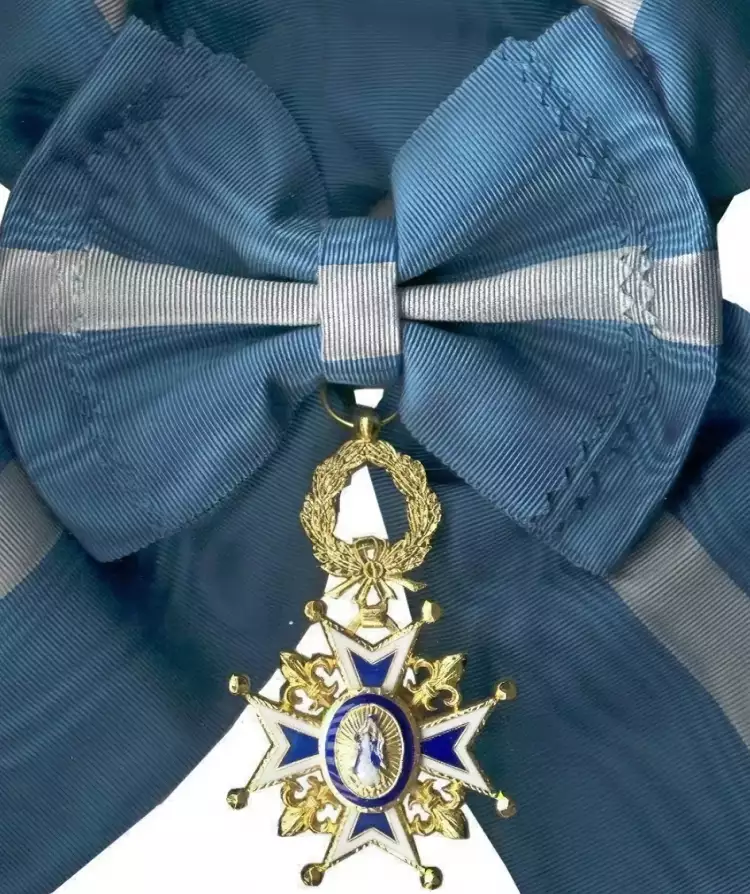 Order of Carlos III. Ribbon of the Order of the Grand Cross
Order of Carlos III. Ribbon of the Order of the Grand Cross
In the 18th century, among the first recipients were notable Spanish officials and military personnel: priest and lawyer Alfonso Clemente de Arostegui y Cañavate, Cardinal Francisco Antonio de Lorenzana y Butrón, and General Ambrosio de Funes Villalpando y Abarca de Bolea. In 2021, the recipients of the regalia included Queen Silvia of Sweden, former Spanish Minister of Foreign Affairs José Manuel García-Margallo y Marfil, and astronaut and politician Pedro Francisco Duque.
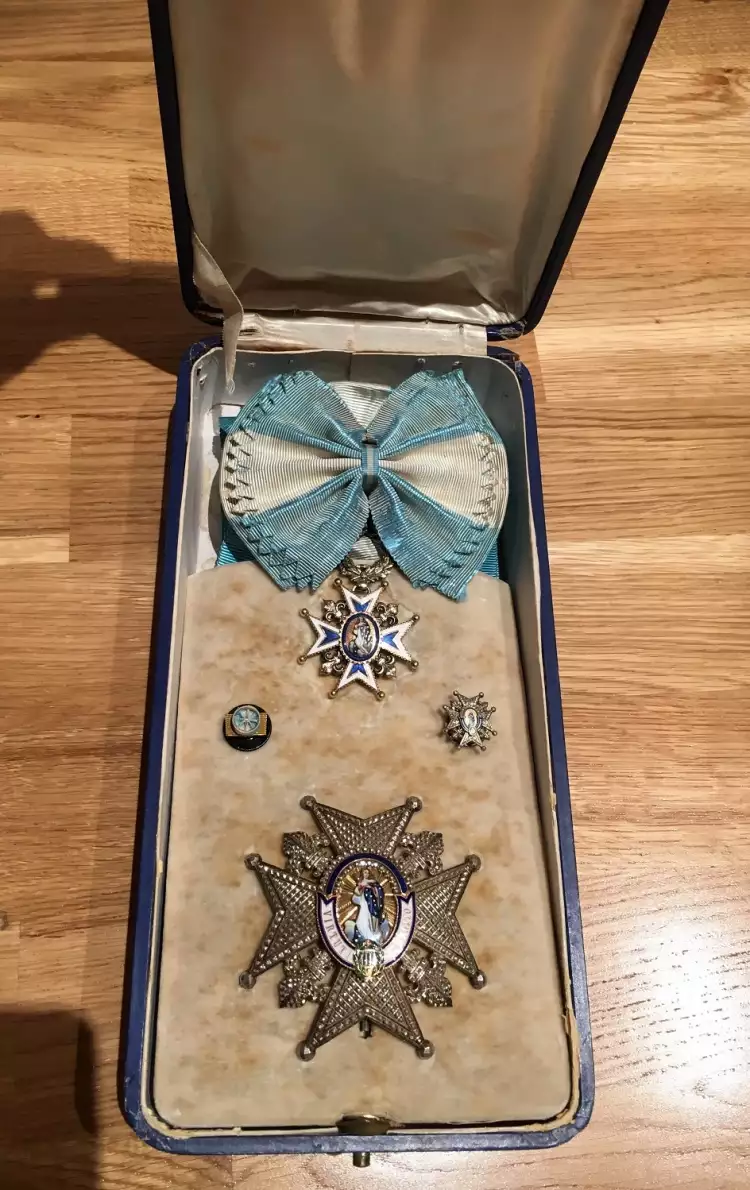 Order of Carlos III. Set of insignia of the Order of the Grand Cross
Order of Carlos III. Set of insignia of the Order of the Grand Cross
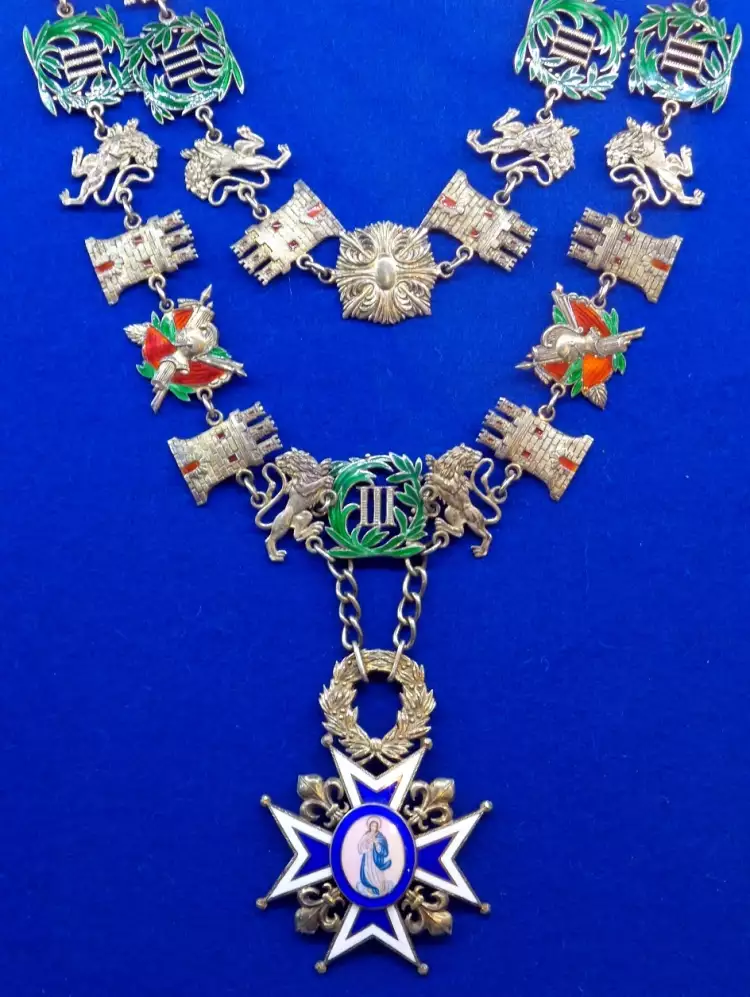
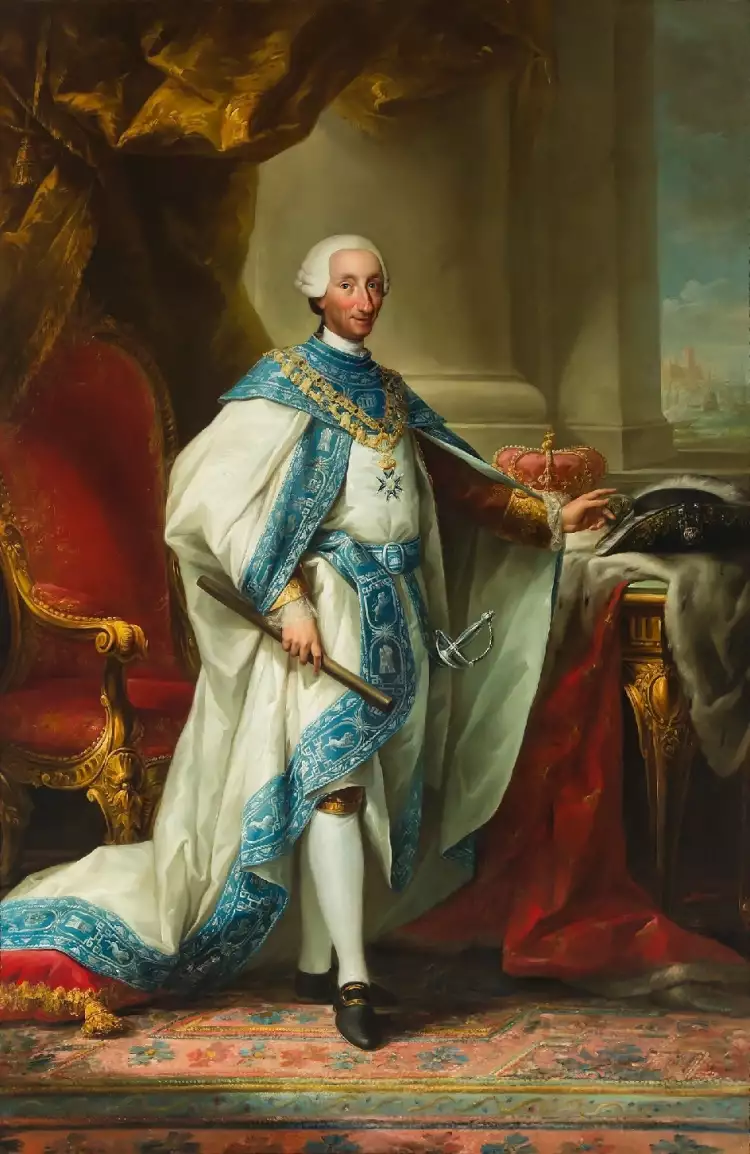
 The Timeless Charm of Vintage Ephemera: A Collector's Guide
The Timeless Charm of Vintage Ephemera: A Collector's Guide  Illuminating the Past: The Rise of Vintage Lighting in Modern Decor
Illuminating the Past: The Rise of Vintage Lighting in Modern Decor 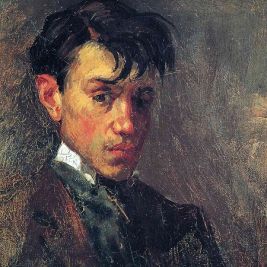 Pablo Picasso was a recognized genius of 20th-century art
Pablo Picasso was a recognized genius of 20th-century art 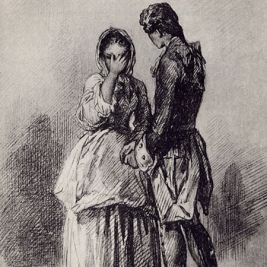 Illustration is a colorful and visually appealing drawing that complements the content of a book
Illustration is a colorful and visually appealing drawing that complements the content of a book  Expressionism in interior design - the style of freedom and youth
Expressionism in interior design - the style of freedom and youth  Jazz Style in Interior Design - Creative Legacy of the "Roaring Twenties"
Jazz Style in Interior Design - Creative Legacy of the "Roaring Twenties" 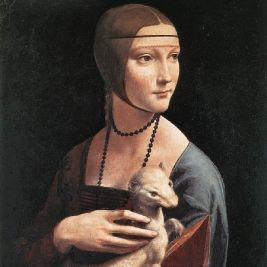 The top 10 most famous Italian artists - the greatest masters of painting in Italy of all time
The top 10 most famous Italian artists - the greatest masters of painting in Italy of all time 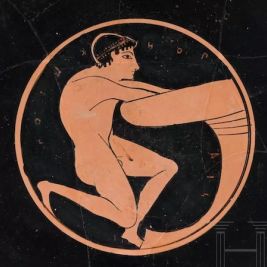 Hermann Historica Auction: Kunst, Antiquitäten & Antiken
Hermann Historica Auction: Kunst, Antiquitäten & Antiken  The painting "Cross in the Mountains" ("Tetschen Altar") by Caspar David Friedrich is an attempt to convey the presence of God through the elemental force of nature
The painting "Cross in the Mountains" ("Tetschen Altar") by Caspar David Friedrich is an attempt to convey the presence of God through the elemental force of nature 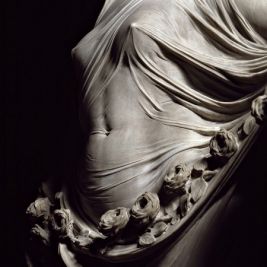 Marble Veil: Trompe-l'oeil Technique in Sculpture
Marble Veil: Trompe-l'oeil Technique in Sculpture